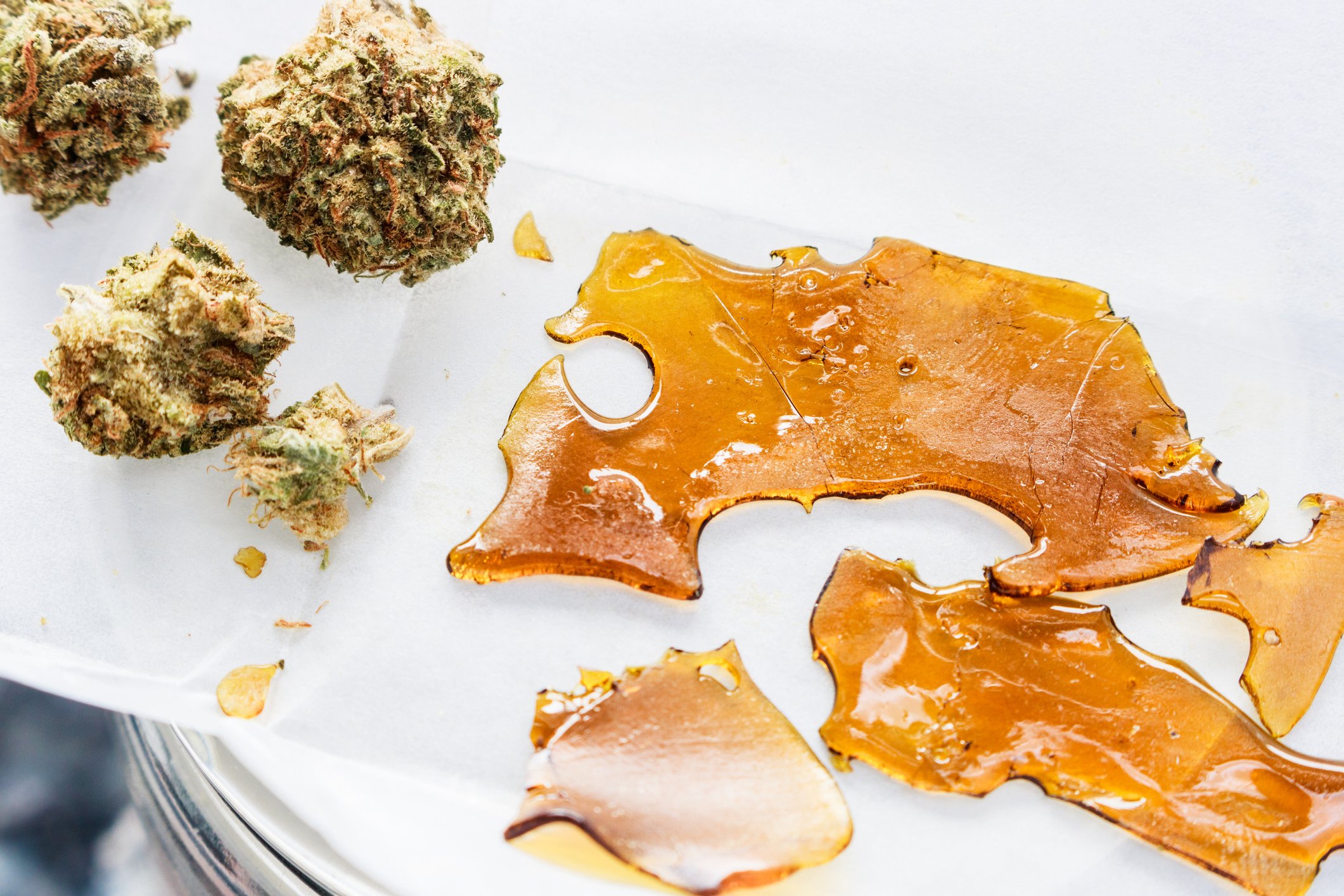
When most people think about cannabis, they typically think about the flower. Perhaps their previous experience involved the most basic of cannabis extraction methods – fire. They ground the flower, rolled it in paper or stuffed it in a bowl, applied a lighter, and inhaled it in. Regarding simplicity, this method is hard to beat. However, in terms of THC extraction, other methods are much more efficient.
The simple cannabis flower contains anywhere from 15 to 25 percent THC, but if you were to use a more efficient extraction method to create a cannabis concentrate, you would end up with a product that can reach close to 100 percent THC. While there are many ways to extract cannabis, most methods are filed under two groupings: solvent and solventless.
BHO
Butane Hash Oil (BHO) or Butane Honey oil, is one of the most popular solvent-based extraction methods, as it produces a wide range of consistencies:
- Budder
- Sap
- Shatter
- Snap ‘n’ pull
- Sugar
While this method is similar to a French press, it is not a method that should be tried at home, as it involves butane ―a highly flammable and toxic substance― and must be properly removed before the concentrate is used.
To continue the French press metaphor, ground-up cannabis plant matter is placed in a column with a filtration system at the end. As the butane is added and pressed through, it picks up the cannabinoids and terpenes of the marijuana and strains out the plant matter. To strip the BHO of the butane, the concentrate is placed in a vacuum oven. Once the butane levels have reached a small enough number to be deemed safe, the end result is ready for use.
PHO
Propane Hash Oil (PHO) uses a similar extraction method to that of BHO. The primary difference is the use of propane, rather than butane. Because the solvent used here boils at a lower temperature than butane, Propane Hash Oil tends to result in a buttery concentrate that’s commonly referred to as budder, crumble, or wax. As propane tends to be more expensive than butane, many concentrate producers will mix the two solvents to balance concentration levels and efficiency.
Distillation
Our first solvent-free concentration method is distillation. Distillation is often referred to as isolation due to its ability to isolate specific compounds within the cannabis plant. This makes it possible to create an end result that is pure THC, THC-A, or even CBD with a resulting product resembling sugar or salt, with a ground, crystallized structure.
The isolate production process is very technical and requires the use of laboratory-grade equipment and chemicals. Both rotary evaporation―a method involving spreading a liquid into a thin layer and keeping it at low pressure, and chromatography―a technique that separates mixtures by passing them through a solution.
Other techniques available, but not used at Chronic Creations
Dry Sift
Dry Sift is a popular albeit inefficient form of extraction. In its most base form, Dry Sift is the result of pushing dried flower through tight screens with microscopic holes that allow trichome heads to pass through. Dry Sift prevents the plant’s stalk and other matter from joining their THC-heavy counterparts.
Most people enjoy kief―the loose, crystalized parts of cannabis. However, due to their multi-part grinder, commercial production of Dry Sift involves the diligent use of a series of silkscreens to isolate the essential oils and waxes of the flower further. As many terpenes remain in the concentrate, this process creates an end product that retains the aroma and flavor of the cannabis flower. This method is more intensive, expensive, and produces lower concentrations of THC compared to the other methods of extraction that commercial producers often prefer.
Supercritical Fluid Extraction
Supercritical Fluid Extraction is often a preferred way of extracting THC as the solvent involved – CO2 – is much safer than either butane or propane. The downside to this method is that it often results in a low level of terpenes in the final concentration. As terpenes are what gives marijuana its earthy flavor, CO2-based concentrates often lack a discernible taste profile. Because of the lack of flavor, the oily extract produced with Supercritical Fluid Extraction is commonly used in edibles and vape pens.
This CO2 extraction method uses scientific machinery to hold the gas at very high-pressure. The high-pressured gas then passes through the cannabis, taking with it the plant’s oils, waxes, and terpenes, while also killing any mold or bacteria lingering in the plant.
Cannabis Concentrates at Chronic Creations
If you are ready to up your cannabis game and move from low-THC flowers to high-THC concentrates, then look no further than Chronic Creations. We are experts in the field of extraction techniques and possess the ability to turn low-quality trim into high-quality concentrates. With products available throughout the state of Colorado, contact us today through our website or via email for more information!
Image Credit: HighGradeRoots / Getty Image

Recent Comments